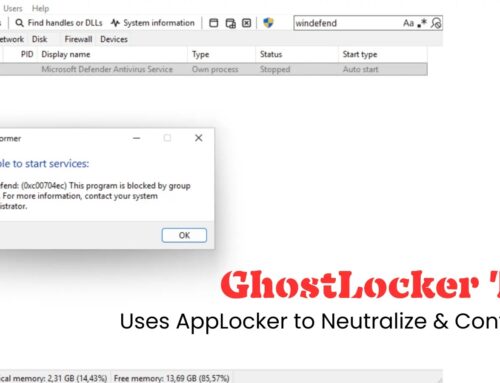
TP-Link Network Video Recorder Vulnerability Let Attackers Execute Arbitrary Commands
TP-Link NVR Vulnerabilities: A Critical Threat to Surveillance Infrastructure
The security of our physical spaces increasingly relies on robust surveillance systems. However, recent discoveries highlight significant vulnerabilities within widely deployed Network Video Recorder (NVR) systems, specifically impacting TP-Link’s VIGI series. These high-severity flaws could allow unauthorized actors to gain complete control over your surveillance infrastructure, posing a grave risk to sensitive data and physical security.
Understanding the TP-Link VIGI NVR Vulnerabilities
Two critical vulnerabilities, CVE-2025-7723 and CVE-2025-7724, have been identified in TP-Link VIGI NVR systems. These flaws are categorized as allowing attackers to execute arbitrary commands on affected devices (Remote Code Execution or RCE). The implications are severe: an attacker could manipulate camera feeds, disable recording, exfiltrate sensitive data, or even pivot to other connected network segments.
Specifically, the following models have been confirmed as impacted:
- VIGI NVR1104H-4P V1
- VIGI NVR2016H-16MP V2
The ability to execute arbitrary commands represents a complete compromise of the device. This level of access grants an attacker the power to alter system configurations, install malicious software, or establish persistent backdoors, all without physical access to the NVR.
Impact and Risks
The direct impact of these vulnerabilities extends beyond just the NVR itself. A compromised NVR can become a gateway into the broader network. Organizations and individuals relying on these specific TP-Link VIGI models face several significant risks:
- Loss of Confidentiality: Attackers could access stored video footage, potentially revealing sensitive information, trade secrets, or personal data.
- Loss of Integrity: Video feeds could be altered or manipulated, leading to false reporting or obscuring critical incidents. Recorded footage could be deleted or corrupted.
- Loss of Availability: The NVR system could be rendered inoperable, leading to a complete disruption of surveillance capabilities.
- Network Compromise: A compromised NVR could serve as a beachhead for attackers to launch further attacks against other devices and systems on the same network.
- Reputational Damage: For businesses, a breach originating from surveillance systems can lead to significant reputational harm and potential legal liabilities.
Remediation Actions and Mitigation Strategies
Immediate action is crucial for owners of affected TP-Link VIGI NVR systems. Proactive measures can significantly reduce the risk of exploitation.
- Firmware Updates: The most critical step is to apply any available firmware updates from TP-Link. Always download updates directly from the official TP-Link support website. Keep an eye on TP-Link’s official security advisories for patches related to CVE-2025-7723 and CVE-2025-7724.
- Network Segmentation: Isolate NVRs and IP cameras on a separate network segment or VLAN, distinct from your primary corporate or home network. This limits an attacker’s ability to move laterally if a compromise occurs.
- Strong Authentication: Ensure strong, unique passwords are used for all NVR and camera accounts. Enable two-factor authentication (2FA) if available.
- Disable Unnecessary Services: Review the NVR’s configuration and disable any services or ports that are not absolutely necessary for its operation.
- Regular Monitoring: Implement constant monitoring of NVR logs for unusual activity, failed login attempts, or unexpected reboots.
- Physical Security: Ensure physical access to the NVR device is restricted to authorized personnel only.
Tools for Detection and Mitigation
While direct patches are the primary defense, several tools can assist in monitoring and securing your network, even when facing potential NVR vulnerabilities:
| Tool Name | Purpose | Link |
|---|---|---|
| Nmap | Network discovery and port scanning to identify open ports on NVRs. | https://nmap.org/ |
| Snort / Suricata | Network Intrusion Detection/Prevention Systems (IDS/IPS) for anomaly detection and suspicious traffic alerts. | https://www.snort.org/ / https://suricata.io/ |
| Splunk / ELK Stack | Centralized log management and analytics for NVR logs and network activity. | https://www.splunk.com/ / https://www.elastic.co/elastic-stack |
| Vulnerability Scanners (e.g., Nessus, OpenVAS) | Automated scanning for known vulnerabilities, including outdated firmware. | https://www.tenable.com/products/nessus / https://www.openvas.org/ |
Conclusion
The discovery of CVE-2025-7723 and in TP-Link VIGI NVR systems serves as a stark reminder of the continuous need for vigilance in cybersecurity. Surveillance infrastructure, critical for physical security, also presents a significant attack surface. Prioritizing firmware updates, implementing robust network segmentation, and maintaining proactive monitoring are not merely best practices; they are essential defenses against increasingly sophisticated threats targeting our interconnected world.





